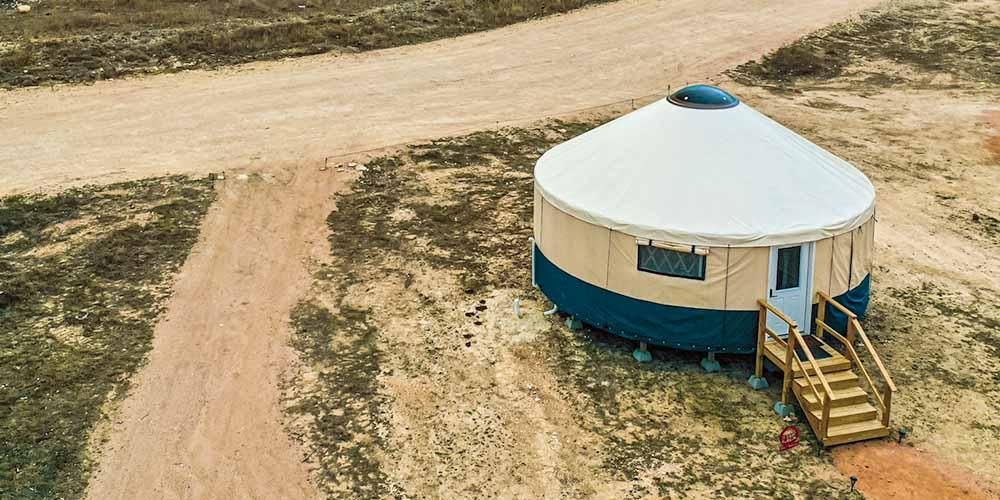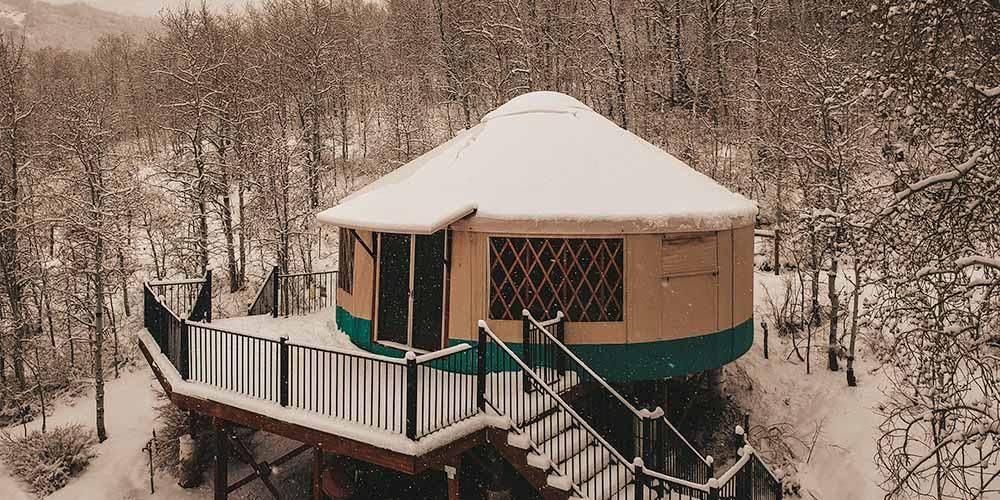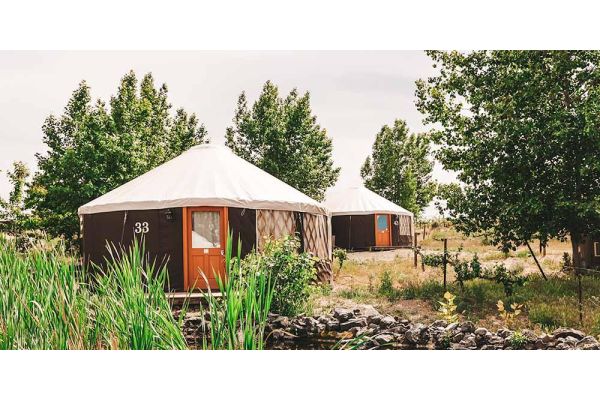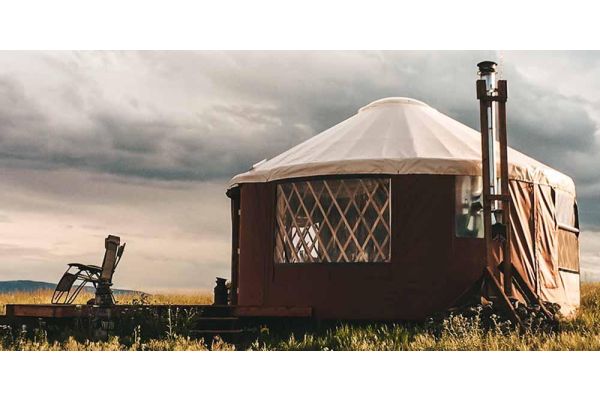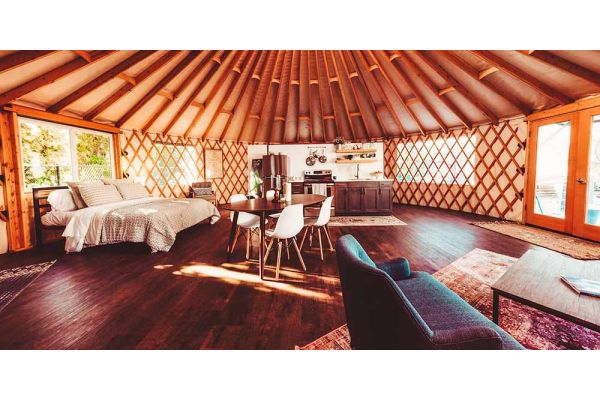Facts About Solar, DYI and OTG
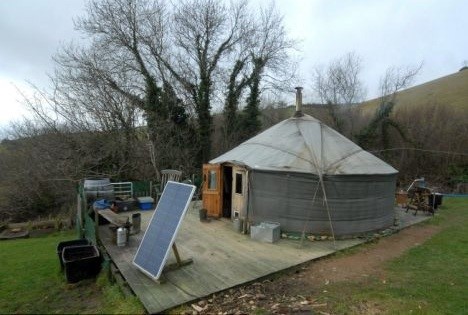

I'm very excited about today's guest post, written by my friend Ron Friedman. Ron represents Sol Solutions, a company that makes portable solar power generators. Just to warn you, this is a long post, so grab a snack and get comfy! This is the best post I've read about putting a solar generator in your Rainier Yurt.
Take it away, Ron!
Differentiating solar generators for yurts versus other structures will be dependent upon your particular design. You will not put a solar system on the roof, that’s for sure. Sizing will be dependent upon how much power you need. (Adding up the wattage of all your electrical items and the hours you want them on.)
If you have appropriately facing deck space or unshaded grounds, this may represent the correct location for the placement of solar panels. A portable solar generator will be a simple solution, easily portable, and plug and play. But with a solar generator, you will also have a charge controller, an inverter, and the critical component, battery storage.
The critical elements of any solar generator are:
- Battery storage capacity
- Solar pv input
- Charge controller
- Inverter rating
- Component quality
- Portability
- Balanced system design
Battery Storage
If you are living off the grid, then understanding battery storage, sizing and capacity is essential. The battery system will allow you to have lights and more during the night as well as cloudy periods, or when your demand exceeds the power output of the panels alone.
Batteries are rated in amp hours, like 12 volt 100 amp/hours. But to determine how much power you need, everything is rated in a wattage draw. This requires that you calculate watt hours from the amp hours of the battery. In our example, you multiply 12 volts x 100 amp/hours resulting in 1200 watts.
You may think that this gives you 1200 watts of usable power, but batteries are finicky and lead acid battery manufacturers recommend using only 2/3 of the power to prevent draining the batteries decreasing the life of the system. If you drain your lead acid battery system, it will be dead or certainly suffer an early demise. In our case 2/3 x 1200 = 800 watts of functional power. So a 100-watt draw notebook computer could run for 8 hours before charging the system would be needed. In most cases, you will need more power available than this. You have to add all the wattage requirements of your electrical equipment, toaster, fridge, lights, fans, TV, (everything) to size your system properly.
Solar panels capture solar energy. They are rated in watts like 100-watt panels or 235-watt panels.
Different manufacturers provide various watt panels. In many instances, you have approximately 6 hours of sunlight to capture energy if the panels are situated properly. You can leave them pointing south, but a system on wheels allows you to easily adjust the angle of the panels through the day maximizing your solar harvest.
Fully recharging the 100 amp hour battery with a 140-watt solar panel can be calculated like this. Total usable watts were 800. Divide this by 140 watts from the solar panel. 800 amp/hours divided by 140 watts, or 5.7 hours charge time. But if you are running appliances during that time, it will take additional time for charging. And batteries just sitting at less than a full charge or not charging to capacity will impact their lifespan. Hence you will design a system to be able to provide usable power and charging power simultaneously.
Charge Controller
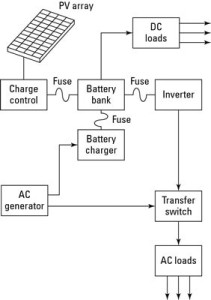

Between your solar panels and your batteries, you need a way to control the voltage or current going to the batteries. It protects the batteries from overcharging.
Once again there are many low-end controllers available. If the system is not matched well you will lose a huge amount of power or you will damage your batteries. We highly recommend MPPT controllers (Maximum Power Point Trackers). These electronic components take a high-voltage DC coming off the panels and lower the voltage so the batteries can be charged safely.
It can get pretty confusing here but a 140-watt 12-volt panel does not provide 140 watts. The MPPT controller checks the output of the panels and matches it to the battery to maintain a safe charge in amps. They are much more efficient than low-end controllers.
Inverters and Inverter Rating
The power from the solar panels is DC. Most US standard equipment is AC. So the power must be converted. The inverter changes that DC voltage to useable 120 volt AC. There are also inverter chargers that allow you to charge your battery bank from a grid connect or fossil fueled generator. The inverter charger would take that AC power and change it to DC allowing your batteries to be charged quickly and safely.
The rating on the inverter refers to the maximum amount of power it can take from the generator. So a 1500 watt rated inverter can take 1500 watts in AC power. But pulling the maximum amount of power will deplete the 100 amp hour battery from our example in about 30 minutes. (800 useable watts divided by 1500 watts) For solar generators the general rule to keep in mind is to allow a 1.5 to 1 ratio where your useable power in this case would be 1500 watts with an inverter rating of 1000.
Now that you have this information, watch out for:
- Generators with little or no battery storage.
- An inverter charger is an excellent choice that allows for quick charging of your batteries with grid or gas/diesel powered generators.
- Be sure to follow the 1.5 to 1 ratio (useable power to inverter rating).
Quality Components
Like everything else, “you get what you pay for.” But in the case of a solar generator, if you are living off grid, reliability is critical. Or if you are using a solar generator for emergency situations it has be dependable and functioning when the need arises.
American made solar controllers and inverters tend to have 2-5 year warranties. Look for this as a standard and be cautious with low end systems.
Metal rather than plastic housings will provide much longer and durable protection for your system. Plastics break down over time with sun exposure and are just not as long lived for rugged situations like off grid scenarios, emergency situations or construction sites.
The solar panels come from China, India, the US, Canada, Germany and other countries. From a sustainable point of view, purchasing as close to local as possible makes sense. And it will contribute to help in building a sustainable solar industry here in the US or wherever you happen to be on our space ship.
Watch out for:
- Solar generators with un-named components
- Plastic casings
Portability
Solar generators often come with some type of portability. This provides power where you need it when you need it, and the ability to track the sun. The weight of the batteries can be very extreme even approaching 100 pounds for a single battery.
Be sure a portable system is not sacrificing storage capacity for ease of mobility. Cheap plastic wheeled units save money but do nothing for ease of moving or long life of the system. Look for good bicycle wheels, proper weight distribution, ease of loading into a truck, or moving from the home to a workshop or outdoor construction area where power is needed.
Watch out for:
Cheap or inexpensive wheels or no wheels
Unbalanced very heavily designed systems
Balanced System Designs
Balanced system design simply means all the components of a solar generator system are quality products, fit well together, and have ratings that support the functions you are seeking. Useable storage capacity (2/3 of the rated storage ), good solar module panel input, and the appropriate inverter rating are critical. Remember the ratio of 1.5 useable watt-hours to 1 watt of inverter rating with 6 hours or less of recharging time.
1500 useable watt-hours is a good starting point for storage capacity. This would look like a 250-watt solar panel (or input) and a 1000-watt inverter.
Provided by Ron Friedman and Chaz Peling, owner of Sol Solutions.
Please mention you read about us on the Rainier Yurt blog!
Glossary
AC – alternating current. Standard for households here in the US. (The charge can go in both directions)
DC – direct current (The charge only goes in one direction)
Watts – amount of electricity used by a power consuming device
Amps – volume of electricity
Amp/hours – this is the energy rating for a battery or battery system. You can think of this as what is the maxium amperage that can be taken from the battery until it is drained. If you draw 5 amps for a period of time the battery will last for some specific amount of time. If you draw 10 amps, it will last less time. But that will leave the battery drained (lead acid). That is not what you want to have happen. Check the manufacturers guidelines or with your battery specialist. Some manufacturers suggest only draining the battery to 60% of capacity before it would require charging.
Volts – the amount of pressure of electric power
Lithium Battery – a relatively new battery technology that allows for very dense power storage. It can store multiple times the amount of energy of lead acid batteries and can be discharged down to 10% of capacity with little or no harm. They are also much lighter than lead acid batteries.
Lead Acid Battery – a long time established battery technology
Solar controller – a component that manages the power from the solar panels going to the batteries.
MPPT controller – an advanced solar controller providing greater safety and charging ability
Inverter – this component takes the power from the batteries and converts it to AC power common in most households
Inverter rating – the amount of power that the component can process from the battery system
Electric Generator – a device that creates electricity. A solar generator takes light energy and converts it to electricity. A gas, diesel or propane powered generator takes mechanical energy and converts it to electricity.
Enjoy the journey!




